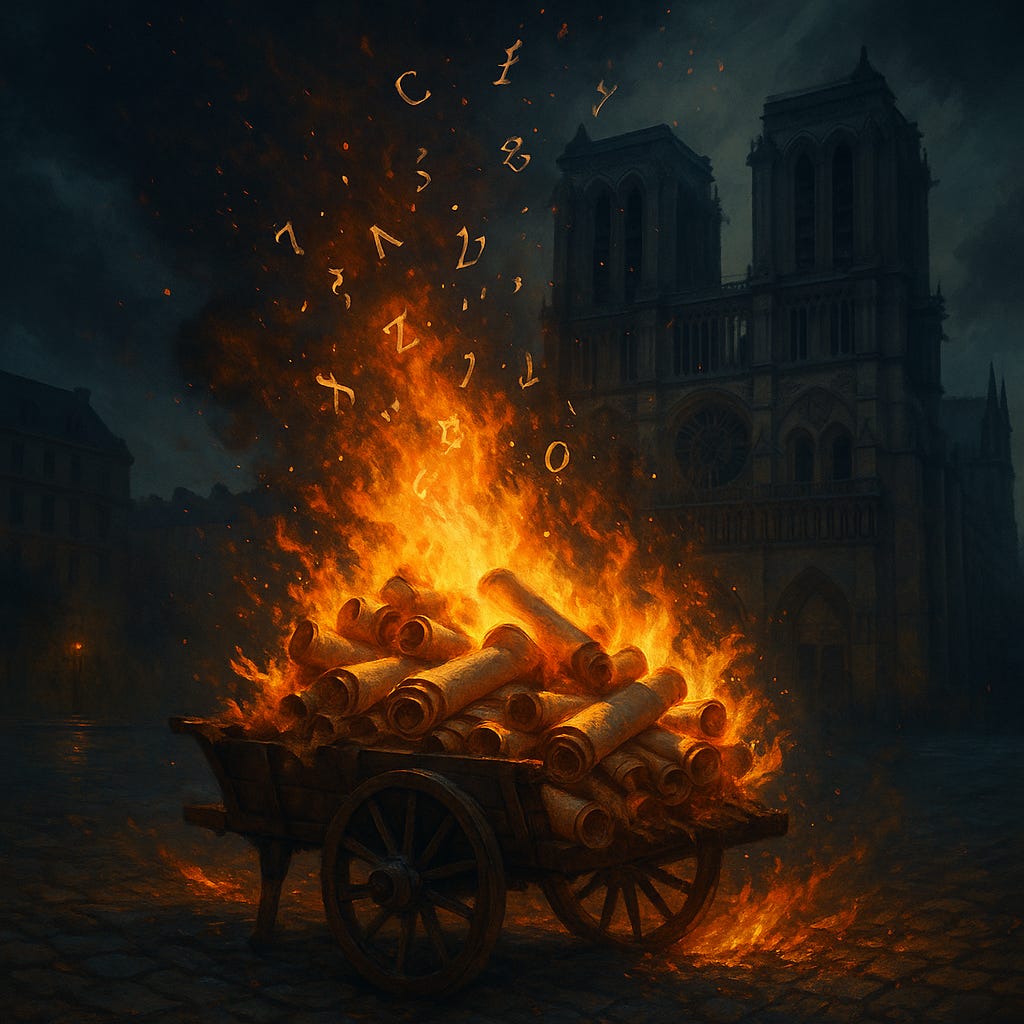Erev Shabbos Parashas Chukas is a terrible day in Jewish history. On this day, around the year 5000 from Creation, corresponding to 1240 CE, on Friday of Parashas Chukas, the ninth of Tammuz, an apostate Jew named Nicolas Donin advised King Louis IX that if he wanted to rid France of the Jews, he should begin by destroying the Talmud.
The king gave the order for every available copy to be confiscated and twenty-four cartloads of handwritten manuscripts, approximately 12,000 volumes of the Talmud, were burned in the public square opposite the Notre Dame Cathedral in Paris. At the same time, he summoned four of the great Baalei Tosafos, the medieval Talmudic commentators whose words have appeared on the side of every printed page of the Talmud for centuries, to defend the Talmud in a public debate with Donin.
One of them, Rabbi Yechiel of Paris, had once been Donin’s teacher. Although Donin didn’t win the debate in any meaningful way, the outcome had already been decided and the manuscrip…
Keep reading with a 7-day free trial
Subscribe to Shui’s Newsletter to keep reading this post and get 7 days of free access to the full post archives.



